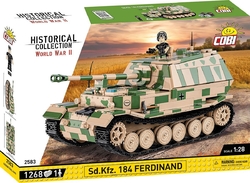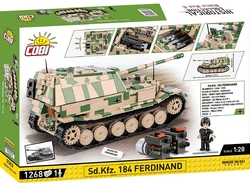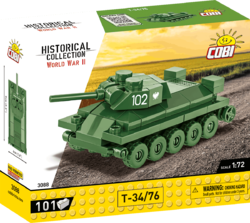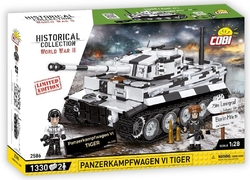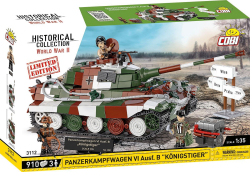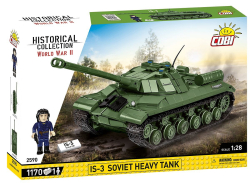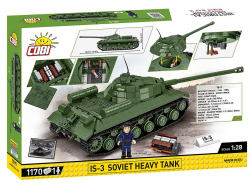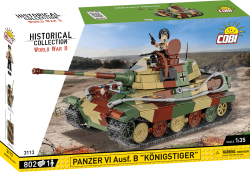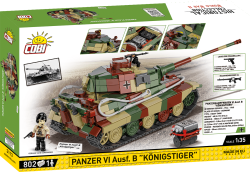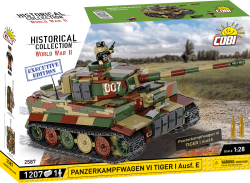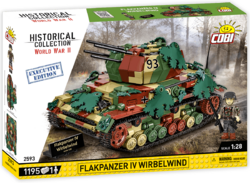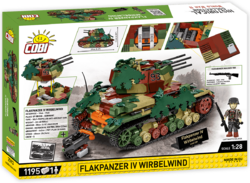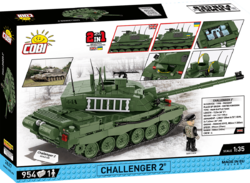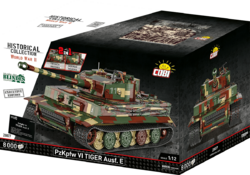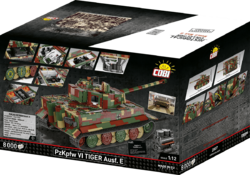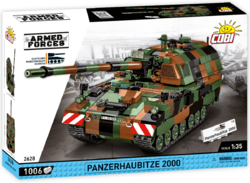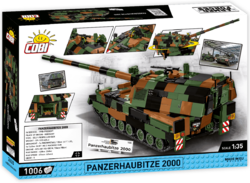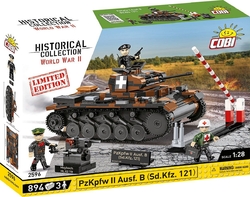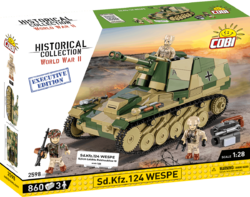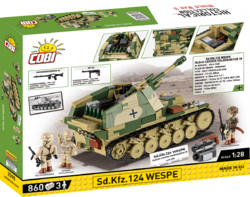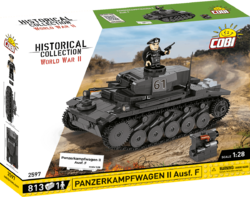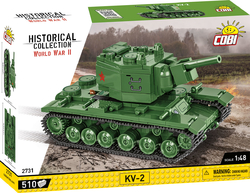Kit of the model of the German tank destroyer Panzerjäger Tiger in field camouflage. The assembled model has a fixed turret with an adjustable gun sight, an opening top hatch in the turret and an opening rear hatch. The interior of the tower is brought out in many details, including the sliding system of the cannon. A Maybach engine with a pair of fans is stored under the removable cover. The package also includes a tank commander figure and a cube with a description. The tank tracks are functional and the model can be easily driven on a non-slip surface.
Show more
100 %
(1 Ranking)
| List Number: | COBI-2580 |
| EAN: | 5902251025809 |
| Warranty: | 24 months |
| Manufacturer: | COBI |
| Loyalty Points: | 11 |
| Price excluding VAT: | 1 515,98 Kč |
Description
Parametres
Files and Links
Discussion
Reviews1

You know that:
- "Unaffordable luxury". That's what the German generals called the heavy tank behind A's back. Hitler, who insisted on developing bigger and bigger weapons.
- The Jagdtiger, built on the Tiger II chassis, was the heaviest and best armoured tank to enter series production. By 1944, however, the Third Reich no longer had the resources to produce such colossuses, and the total number of 88 units produced corresponds to this.
- The slow and clumsy tank was, despite all its disadvantages, a formidable opponent. While the Jagdtiger destroyed its opponents at a distance of up to 3.5 km, it was able to withstand fire at close range.
- The Jagdtiger's combat operations were largely limited by a lack of fuel, of which the tank consumed approximately 1,000 litres per 100 km.
- The real threat to the German tank fighter was thus primarily Allied aircraft and their 30 mm guns capable of destroying 40 mm thick overhead armour.
- Interestingly, the manufacturer supplied two types of tracks for each tank. The narrow 660 mm ones were used exclusively for loading onto the wagon and during the tank's transport to the front. The wider 800 mm tracks were for the actual driving. Due to the high weight of the machine, driving on narrow belts was forbidden and crews were threatened with severe penalties for violating the regulation. Changing the belt was a difficult operation. With the weight of one link of the combat belt at 62 kg and the number of 47 links, the entire belt weighed almost 3 tons.
- The combat deployment of the Jagdtigers is still disputed today. Well documented is the deployment of 4 machines that were sent by Major General Heinz Kokott to positions near the village of Chaumont in anticipation of an American attack. In the ensuing battle, 4 Jagdtigers destroyed 18 American Shermans.
- The long and heavy 128 calibre gun was a great advantage, but also a weakness. The long barrel overhang put a strain on the gun's mount when driving over terrain, and the crew had to recalibrate the barrel repeatedly to maintain accuracy.
Technical parameters:
- dimensions: length 10.62 m (including gun), width 3.6 m, height 2.8 m
- weight 75 000 kg
- armour plating 250 mm front, 80 mm side and rear, 40 mm ceiling
- power unit V-12 Maybach HL 230 P30 gasoline engine with 520 kW
- maximum speed off-road 10 km/h, on-road 40 km/h
- fuel consumption 700 - 1000 l/100 km
- range 120 km on road / 80 km off-road
- main armament PaK 44 L/55 cannon 128 mm calibre
- secondary armament 1x mounted MG 34 machine gun of 7.92 mm calibre and a loose MG 42 machine gun
- crew 6 persons
From the memoirs of tank commander Otto Carius:
I was the commander of Jagdtiger number 305004, which is now part of the collection of the Tank Museum in Bovington. In April 1945 we were sent into position to defend Berlin where we encountered Soviet IS-2 tanks. Their tanks were well armored, but their guns did not have enough firepower. In one day we destroyed three IS-2s and damaged two others without sustaining any damage. The war ended for us by running into a mine. We had to abandon Jagdtiger.
Assembly instructions
| Number of figurines | 1 pcs |
|---|---|
| Number of pieces | 1280 pcs |
| Dimensions after assembly | 38 x 14 x 11 cm |
| Recommended age | 9+ |
| Compatible with other brand of kits | No |
| Contains luminous blocks | No |
| Material | Plastic |
| Collection | World War II |
Discussion is empty.
100 %
5
1x
4
0x
3
0x
2
0x
1
0x











































